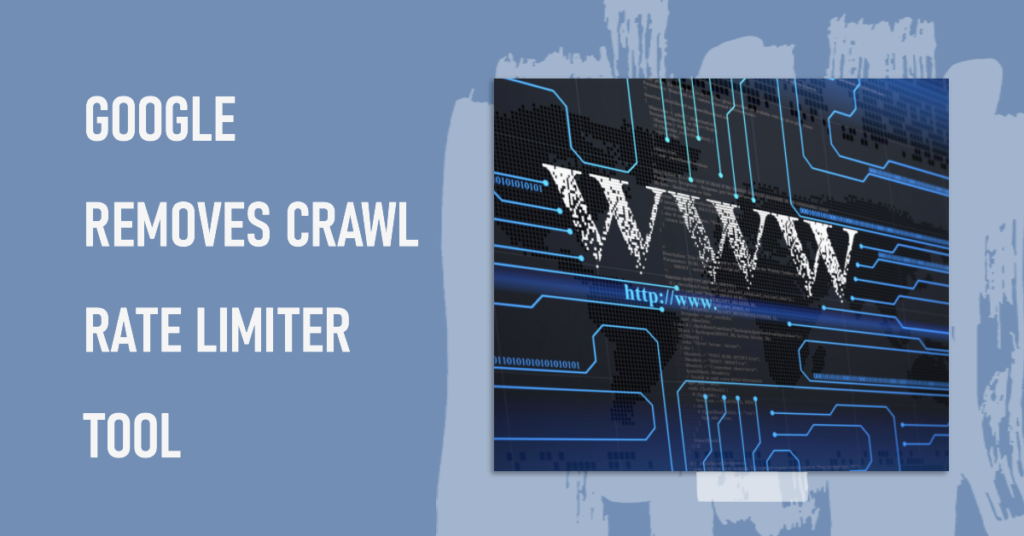Introduction
In the intricate world of website management and SEO, Google Search Console stands as a beacon for webmasters. One of its pivotal tools, the crawl rate limiter, has recently been removed, sparking a wave of discussions and concerns among website owners and SEO professionals.
Google’s Decision to Remove Crawl Rate Limiter
Google, in a surprising move, announced the removal of the crawl rate limiter tool from its Search Console. This decision, shrouded in mystery, left many questioning the reasons behind it and contemplating the potential ramifications for their websites.
Understanding the significance of this tool is crucial. The crawl rate limiter allowed webmasters to control how fast Googlebot crawled their sites. This provided a sense of control over website resources and ensured optimal performance. Without this tool, webmasters are left in the dark, raising concerns about the impact on their sites’ visibility in search results.
Alternative Solutions for Webmasters
In the wake of this removal, Google has offered alternative recommendations for webmasters to manage crawl rates effectively. Additionally, third-party tools and methods have gained attention as viable alternatives. Webmasters now find themselves exploring new avenues to ensure their websites remain well-optimized for search engine crawling.
Understanding Crawl Rates
To comprehend the implications fully, one must understand what crawl rates are and their significance in the realm of SEO. Crawl rates refer to the speed at which search engine bots, particularly Googlebot, visit and analyze pages on a website. The frequency and efficiency of this crawling process play a crucial role in a site’s overall performance on search engine result pages.
Google’s Crawl Algorithms
Delving deeper, it’s essential to understand the intricate algorithms that govern Google’s crawling process. Googlebot, the search engine’s web crawling bot, employs various factors to determine the crawl rates of different websites. These factors include the website’s server response time, XML sitemaps, and the overall structure and content of the site.
The Future of SEO without Crawl Rate Limiter
As the digital landscape evolves, so too must SEO strategies. The removal of the crawl rate limiter raises questions about the future of SEO. Webmasters are now challenged to adapt their strategies to ensure optimal crawling and maintain or improve their search rankings.
Cautions and Best Practices
In this uncertain terrain, webmasters must exercise caution. Ensuring website accessibility and monitoring crawl activity through alternative means are critical steps to mitigate potential issues stemming from the absence of the crawl rate limiter.
Industry Reactions and Feedback
The removal of the crawl rate limiter tool has triggered reactions across the industry. Social media platforms are abuzz with discussions, and SEO experts are sharing their opinions on the potential impact on website rankings and overall SEO strategies.
Google’s Communication with Webmasters
In the face of concerns and uncertainties, transparency in communication becomes paramount. Webmasters look to Google for clear and concise communication, addressing common concerns and providing solutions to navigate the changing SEO landscape.
Case Studies of Website Experiences
Real-world examples help illuminate the practical implications of this change. Some websites may seamlessly adapt, showcasing positive experiences, while others may face challenges. Analyzing these case studies provides valuable insights for webmasters navigating the post-crawl rate limiter era.
Steps for Optimizing Websites Post Crawl Rate Limiter
Without the familiar tool, webmasters must focus on optimizing their websites for efficient crawling. Emphasizing site structure and employing strategies that facilitate smoother crawling become imperative in this new SEO landscape.
SEO Tools to Fill the Void
In the absence of Google’s crawl rate limiter, webmasters seek alternatives. A plethora of SEO tools is available to fill the void, each with its unique features. A comparative analysis can help webmasters choose the tool that best suits their needs.
Implications for Small Businesses
While larger enterprises may have the resources to navigate such changes seamlessly, small businesses face distinct challenges. Understanding how this change affects startups and implementing strategies tailored to smaller scales is crucial for sustained SEO success.
Google’s Future Plans for Webmaster Tools
Amidst the uncertainty, hints and speculations about Google’s future plans for its webmaster tools emerge. Keeping an eye on potential features and changes can aid webmasters in preparing for what lies ahead.
Conclusion
In conclusion, the removal of Google’s crawl rate limiter tool marks a significant shift in the SEO landscape. Webmasters must adapt, utilizing alternative tools and strategies to ensure their websites remain optimized for search engine crawling. The evolving nature of SEO requires constant vigilance and a willingness to embrace change.
FAQs
1. Why did Google remove the crawl rate limiter tool?
Google cited the need to streamline and improve its tools, focusing on more impactful features for webmasters.
2. How can webmasters monitor crawl rates without the tool? Webmasters can explore third-party tools, analyze server logs, and follow Google’s recommended best practices to monitor crawl activity.
3. What are the potential consequences of not optimizing for crawl rates? Failure to optimize for crawl rates may result in slower indexing of new









